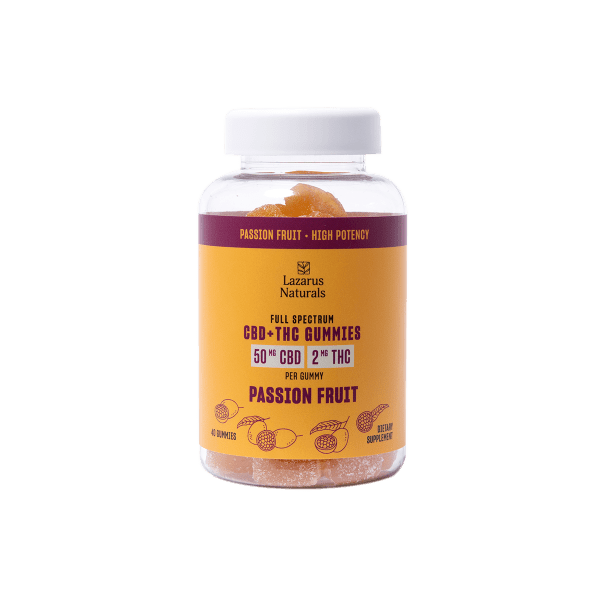Article Topics
Chronic pain affects millions of people worldwide and presents a significant burden on their quality of life, daily functioning, and mental well-being. While conventional pain management solutions like over-the-counter pain relievers and prescription opioids are effective for some, these medications may pose risks such as addiction, tolerance, and adverse side effects. In recent years, medical marijuana has emerged as a promising alternative for pain management, attracting interest from both patients and healthcare providers seeking effective, natural, and safe remedies for chronic pain.
At United Patients Group, we are committed to providing reliable, evidence-based information and expert insights on medical marijuana and its potential applications. In this comprehensive guide, we will delve into the science behind cannabis and its role in managing chronic pain, explore the latest research findings, discuss the available product options, and provide practical advice for incorporating medical marijuana into your chronic pain management strategy.
Cannabis offers a vast array of potential healing properties, courtesy of its various active compounds called cannabinoids. Among the hundreds of cannabinoids present in the cannabis plant, THC (tetrahydrocannabinol) and CBD (cannabidiol) are the most well-known and extensively studied. THC is mainly responsible for the psychoactive effects, or “high,” associated with marijuana use, while CBD is non-psychoactive and offers a range of therapeutic benefits.
Both THC and CBD interact with the human body through the endocannabinoid system (ECS), a complex network of receptors and compounds that help maintain homeostasis and regulate numerous physiological functions, including pain perception and inflammation. Numerous studies have suggested that cannabinoids can modulate key components of the ECS, offering potential analgesic, anti-inflammatory, and neuroprotective effects.
As we delve deeper into the fascinating world of cannabis for chronic pain management, we invite you to join us in exploring this promising, plant-based solution for enhanced comfort and improved quality of life. With the reliable information and guidance provided by United Patients Group, you can confidently navigate your journey toward effective pain management with the help of medical marijuana.
Understanding the Types of Chronic Pain and the Role of Cannabis
Chronic pain can be defined as any pain persisting for longer than three months and is often resistant to conventional treatments. It can be broadly categorized into the following types:
1. Nociceptive pain: Caused by tissue injury or inflammation, examples include arthritis, sprains, and bone fractures.
2. Neuropathic pain: Resulting from nerve damage or dysfunction, examples include diabetic neuropathy, shingles, and carpal tunnel syndrome.
3. Central pain: Originating from the brain or spinal cord, examples include fibromyalgia, interstitial cystitis, and irritable bowel syndrome.
Cannabis, with its diverse array of cannabinoids, may provide relief for different types of chronic pain by targeting multiple aspects of the pain pathway. Both THC and CBD have shown potential analgesic (pain-relieving) and anti-inflammatory effects while also acting on neuropathic pain channels. This multi-targeted approach makes cannabis a versatile option for chronic pain management.
Exploring the Latest Research on Cannabis and Chronic Pain Management
An increasing number of scientific studies and reviews have been published in recent years to support the use of cannabis for chronic pain relief. Some key findings include:
1. A 2015 systematic review examined 28 randomized controlled trials and concluded that there was moderate-quality evidence supporting the use of cannabinoids for chronic pain management.
2. A 2017 report by the National Academies of Sciences, Engineering, and Medicine found substantial evidence that cannabis is effective in treating chronic pain in adults.
3. A 2019 systematic review and meta-analysis concluded that medical marijuana provided a meaningful reduction in chronic pain symptoms and improved patients’ quality of life.
These studies highlight the potential of cannabis in addressing chronic pain and showcase the growing research support for its use in a therapeutic context.
Selecting the Right Cannabis Product for Chronic Pain Management
Various factors come into play when selecting an appropriate cannabis product for chronic pain relief. Here are a few essential considerations to keep in mind:
1. THC vs. CBD: Although THC has its therapeutic benefits, it is also responsible for the psychoactive effects associated with cannabis use. On the other hand, CBD provides many potential health benefits without the “high.” Depending on your specific pain condition and individual needs, you may opt for a product containing only CBD, a balanced THC: CBD ratio, or a higher THC content.
2. Quality: Ensure you are purchasing high-quality, lab-tested cannabis products from a reputable source. Verify that the product has undergone third-party testing for cannabinoids’ strength, presence of contaminants, and quality.
3. Delivery Methods: Cannabis products are available in various forms, including dried flowers, oils, tinctures, capsules, topicals, and edibles. Your choice of administration method will ultimately depend on the desired onset time, duration of effects, and personal preferences.
4. Dosage: Determining the ideal dosage can be challenging due to individual differences in response and the nature of chronic pain. It is best to start at a low dose and gradually increase it while closely observing your body’s reaction and pain relief. Consulting a healthcare professional with experience in cannabis medicine can be invaluable in finding the right dosage for your needs.
Incorporating Cannabis into a Comprehensive Pain Management Plan
While cannabis can offer relief from chronic pain, adopting a holistic approach to pain management is crucial to maximize its benefits. Here are some key points to consider when incorporating cannabis into your overall strategy:
1. Consider combining cannabis with non-pharmacological interventions, such as physical therapy, chiropractic care, massage, and acupuncture, to address the root causes of pain and improve overall function.
2. Engage in regular physical activity, as exercise has been proven to help with pain management by increasing endorphins, improving flexibility, and promoting mental well-being.
3. Prioritize stress management and emotional care, as chronic pain can often lead to feelings of frustration, anxiety, and depression. Mindfulness practices, counseling, and support groups can be helpful in managing emotional health.
Embrace the Potential of Cannabis for Chronic Pain Relief
As research support for cannabis in chronic pain management continues to grow, the plant’s therapeutic potential as a natural, non-addictive, and effective analgesic becomes increasingly evident. By understanding the science behind cannabis, staying informed of the latest research, and incorporating it into a comprehensive pain management plan, patients and healthcare providers can unlock the benefits of medical marijuana for improved comfort and quality of life.
United Patients Group remains dedicated to providing the accurate, trustworthy information and expert guidance you need to confidently navigate your journey toward effective pain management with the help of cannabis. Discover the full potential of this remarkable plant and take control of your chronic pain with the power of medical marijuana.







































Leave a Reply Cancel reply